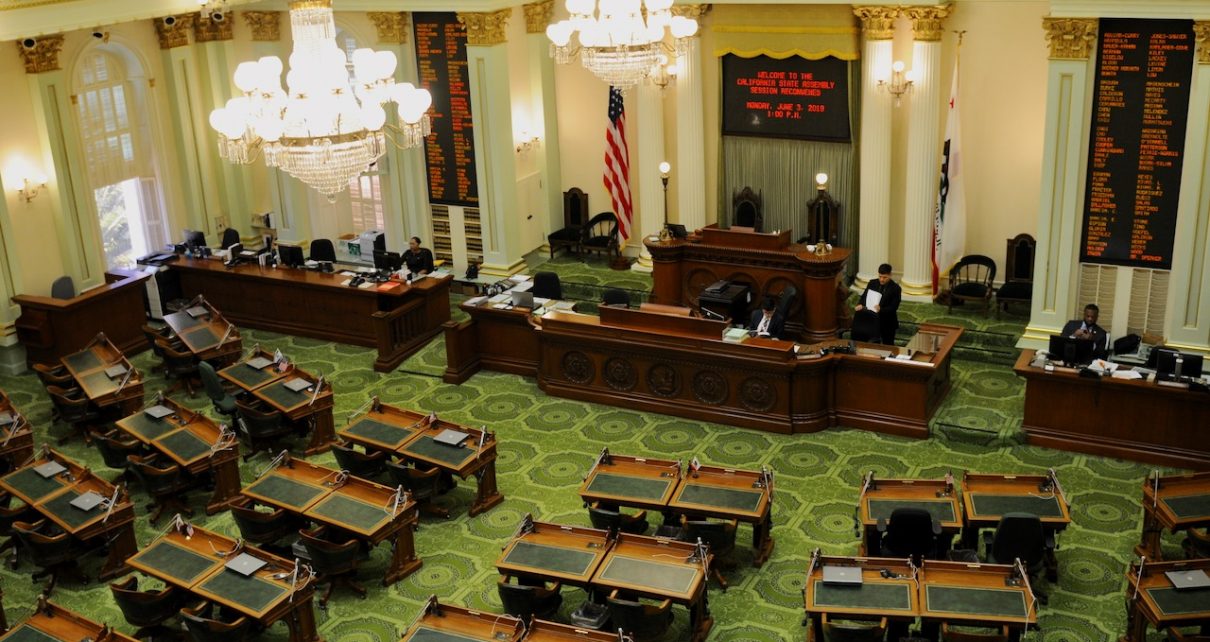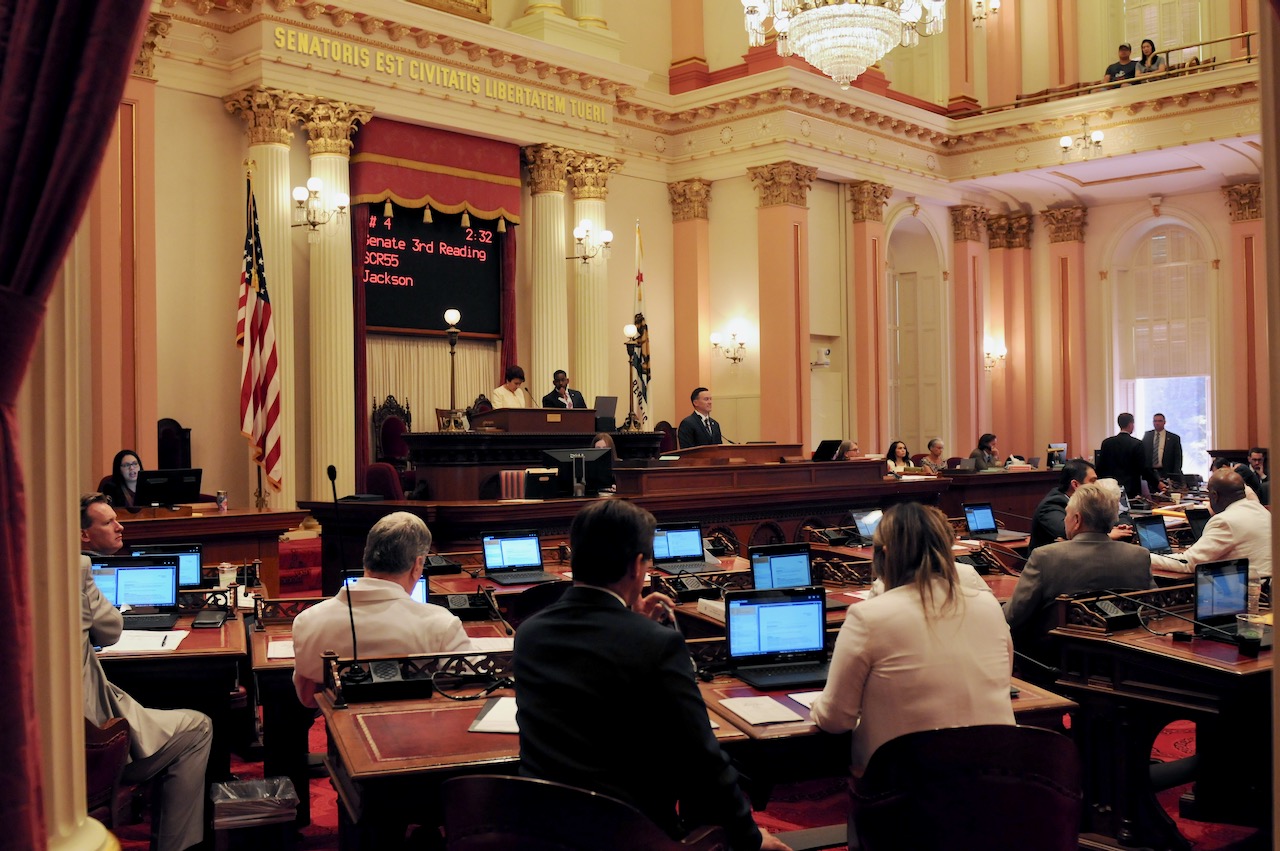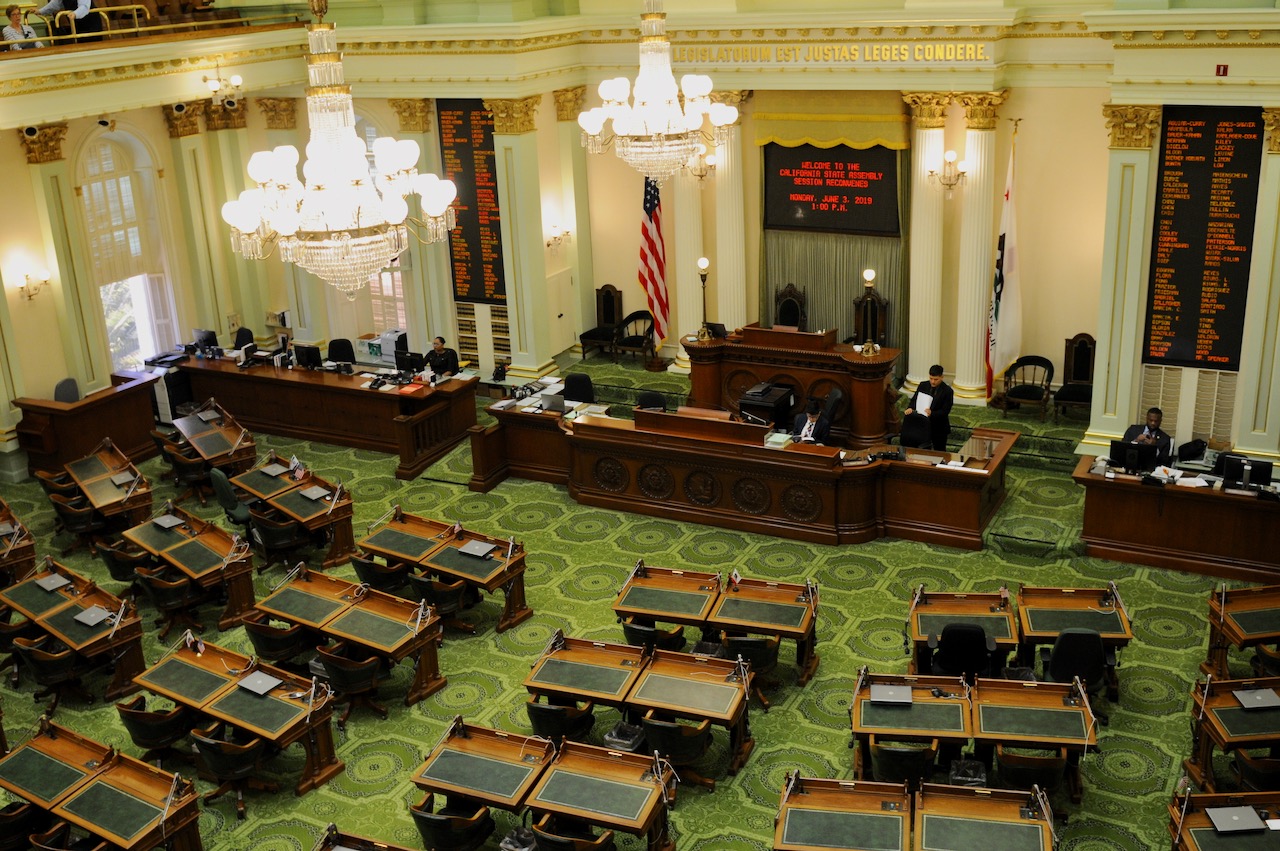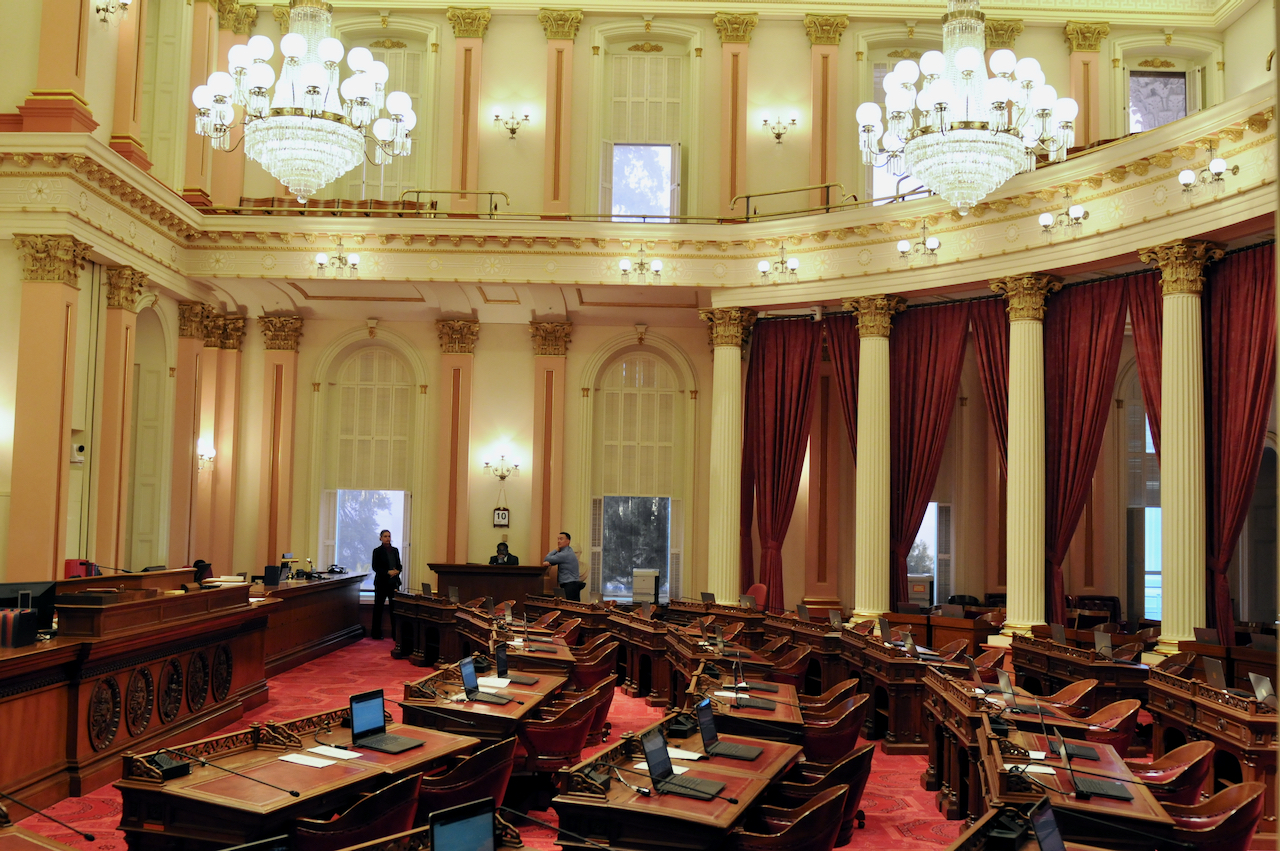
California State Assembly. (Photo: Kevin Sanders for California Globe)
The Work of the Legislature’s Joint Committees
These joint committees serve an important role for the two houses of the California Legislature
By Chris Micheli, November 8, 2019 2:21 am
The California Legislature has a number of joint committees that are comprised of members of the Senate and Assembly and are intended to cover issues of mutual interest. The three main joint committees deal with legislative rules, the state budget and state audits. Capitol observers should be aware of the work of all three of these joint committees.
The Joint Rules Committee (JRC)
The Joint Rules Committee consists of the Members of the Assembly Committee on Rules, the Assembly Majority and Minority Leaders, the Speaker of the Assembly, four members of the Senate Committee on Rules, and other Senators that are appointed by the Senate Rules Committee. The JRC is required to have an equal number of Assembly Members and Senators.
Among the responsibilities of the JRC are: the relations between the two houses and making recommendations to improve that relationship; changes in the law to cure defects affecting the Legislature; adjustments in legislative procedures governing the processing of proposed legislation; and, coordination of the work of the Assembly and Senate and their committees by eliminating duplication of effort. In addition, the JRC approves the involvement of the Legislative Counsel in litigation affecting the Legislature.
Under the Joint Rules of the Assembly and Senate, the Joint Rules Committee has a continuing existence and may meet, act and conduct its business during sessions of the Legislature or any recess. However, this joint committee rarely meets.
The Joint Legislative Budget Committee (JLBC)
The JLBC, which was established in statute over 60 years ago, employs the Legislative Analyst, whose job it is to provide nonpartisan advice to the Legislature regarding the state budget. The JLBC has equal representation by both houses – eight Assembly Members (appointed by the Speaker) and eight Senators (appointed by the Senate Committee on Rules).
The essential function of the JLBC is to make recommendations to both houses concerning the State Budget, the revenues and expenditures of the state, as well as the organization and functions of the state, its departments, subdivisions, and agencies. Under the Joint Rules of the Assembly and Senate, the JLBC is a continuing body.
The Joint Legislative Audit Committee (JLAC)
The purpose of JLAC is to have legislators determine which state or local activities they want reviewed by the State’s Auditor General. JLAC has existed for more than 50 years in state law. There are an equal number of legislators who sit on JLAC – seven members of the Assembly (appointed by the Speaker) and seven members of the Senate (appointed by the Senate Committee on Rules). They meet every few months to review pending audit requests and review and vote on new audit requests.
The results of these audits are made public on the State Auditor’s website and there is a subscription service for those reports. The audit reports are also transmitted to the policy committees of both houses of the Legislature. At the hearings, legislators present their audit requests and the Auditor’s staff provide background and an estimate of the time and cost of the proposed audit. Thereafter, public testimony is allowed and JLAC votes whether to request the audit or not.
Under the Joint Rules of the Assembly and Senate, JLAC is created pursuant to the Legislature’s rulemaking authority under the California Constitution and pursuant to Chapter 4 (commencing with Section 10500) of Part 2 of Division 2 of Title 2 of the Government Code.
Four Members from each house constitute a quorum of JLAC and the number of votes necessary to take action on any matter. The Chairman or Chairwoman of JLAC, upon receiving a request by any Member of the Legislature or committee for a copy of a report prepared or being prepared by the Bureau of State Audits (BSA), must provide the Member or committee with a copy of the report when submitted by the BSA to JLAC.
According to the Joint Rules, JLAC must establish priorities and assign all work to be done by the BSA. Any bill requiring action by the BSA must contain an appropriation for the cost of any study or audit. Any bill or concurrent, joint, Senate, or House resolution assigning a study or audit to JLAC or the BSA must be referred to the respective rules committee of either house. Before the respective rules committee may act upon or assign the bill or resolution, that committee must obtain an estimate from JLAC of the amount required to be expended to make the study or audit.
These three main joint committees serve an important role for the two houses of the California Legislature. While the Joint Rules Committee rarely meets, JLAC and the JLBC both meet to conduct important work related to the budget and state auditing. Capitol observers should monitor their activities to determine whether any actions will impact their interests.
- Frequently Asked Questions About Ethics Training for Local Agencies - April 24, 2024
- Frequently Asked Questions about Privileges of Voters in California - April 23, 2024
- Does a Bill Need Statutory Construction Guidance? - April 22, 2024




